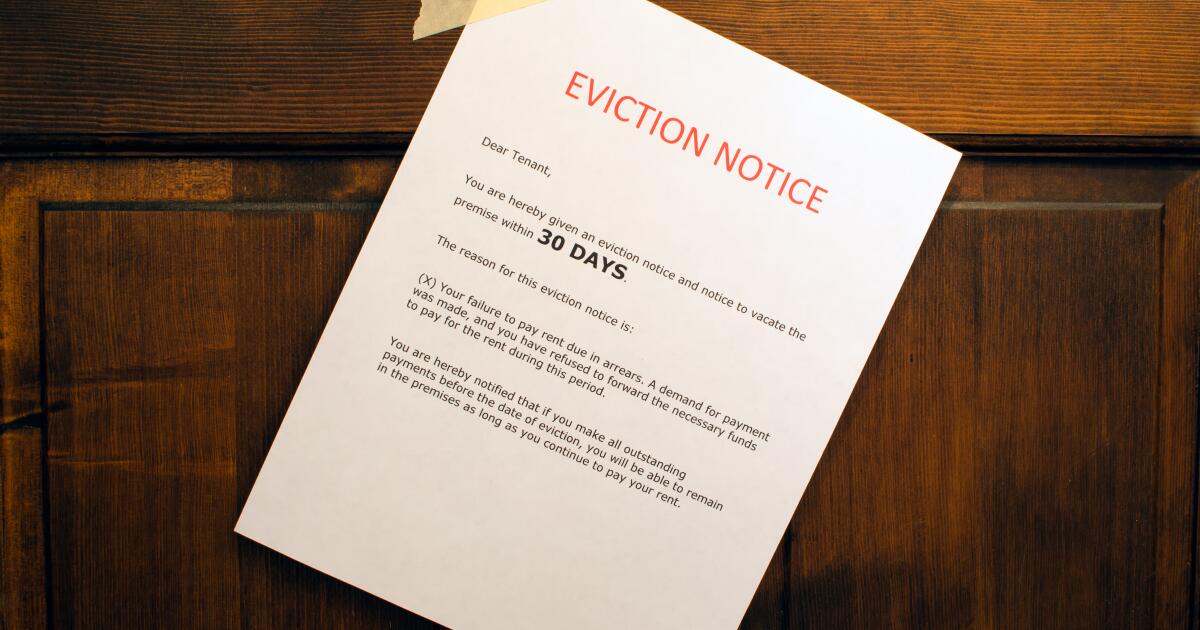
Renters being kicked out of their San Diego homes should always have legal representation and the city ought to expand access to mediation before evictions go to court, according to a report released Thursday by local leaders.
The San Diego Housing Commission analysis also recommended setting a “minimum failure-to-pay amount” before evictions can begin.
“The unfortunate reality for San Diegans is that rents continue to rise and vacancies remain low,” Lisa Jones, the commission’s new president and CEO, said at a City Heights press conference. “The potential for eviction is real for many households.”
The report comes amid a steady rise in homelessness and follows the expiration of several pandemic-era protections, including the city’s ban on evictions when tenants were following the rules.
The city council did approve a host of new safeguards last year. For example, owners who want to take back units for remodels must give tenants two months’ rent.
Yet that’s not enough, the firm HR&A Advisors wrote in the report. “The breadth of eviction-related programs in San Diego is limited, and those currently in place are under-resourced.”
New measures may face resistance from landlords, who’ve argued that they’re facing many of the same financial pressures while losing the flexibility to effectively run a business.
The “Analysis of Residential Evictions in the City of San Diego” was based on six years’ worth of court and census data as well as a survey of thousands of renters.
In the years before the pandemic, at least 3,700 households annually faced eviction citywide, the report said. Of those, around 1,000 each year were forcibly removed by the Sheriff’s Department.
Those numbers only reflect unlawful detainer cases and don’t include evictions that took place outside the court system, meaning the true total is almost certainly higher.
Furthermore, the same places, and the same types of people, were repeatedly hit the hardest.
Central and Southeastern San Diego were epicenters, the report found. Downtown had the most cases, followed by City Heights, East San Diego and College Grove. Similar situations played out in communities with surging housing costs, such as Mission Valley and Oak Park.
Among those who lost housing, the analysis found that Black and Hispanic residents, single parents and the unemployed were disproportionately affected.
Many people surveyed said they struggled to find housing they could afford and couldn’t keep up with rent increases. Around half of the 6,000-plus respondents reported “landlord harassment.”
City Council President Sean Elo-Rivera said he wasn’t aware of a comparable study in San Diego and noted that the data would inform future policies.
“Each eviction is a traumatic event,” Elo-Rivera added.
Cases dropped by about 70 percent during the pandemic, when renters had the most protections, according to the report.
The analysis ended in 2022. There was an increase in filing during the final months of that year, after the eviction ban lifted, said Judith Taylor, a partner at HR&A.






